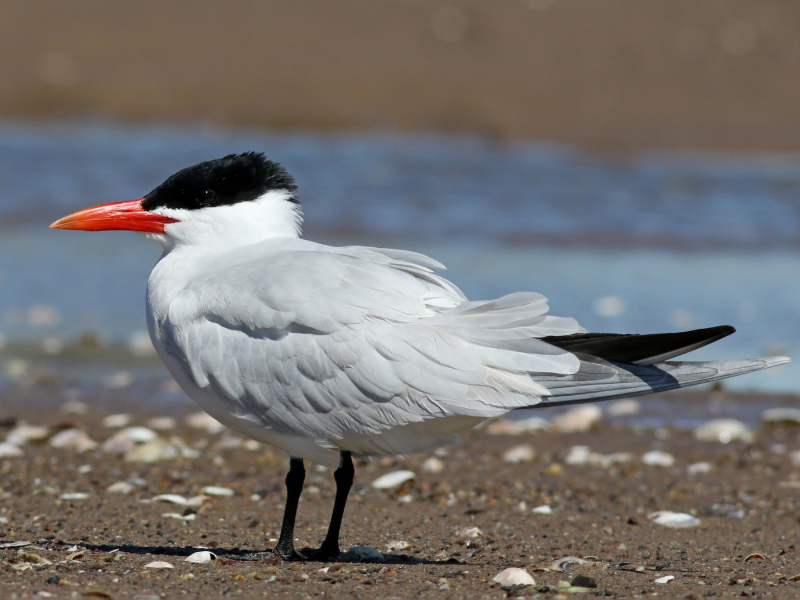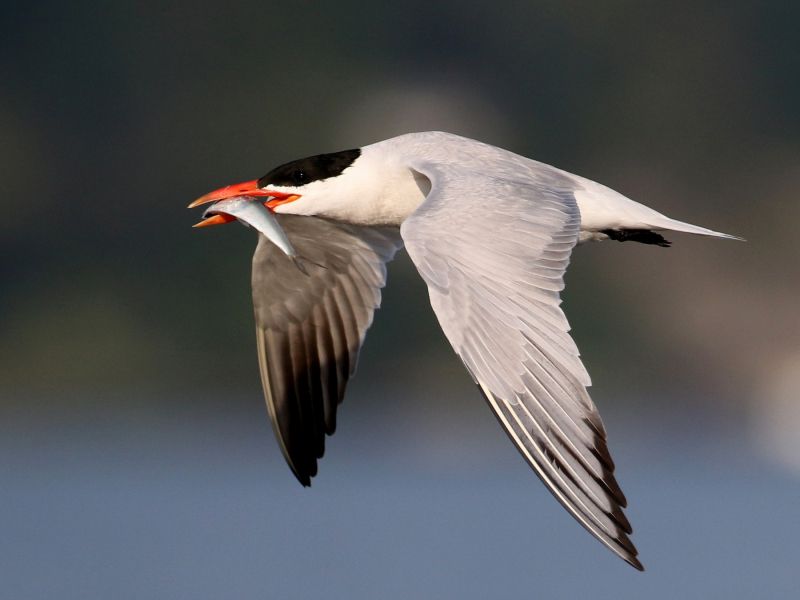Caspian Tern
The Caspian Tern (Hydroprogne caspia) is a species of tern, with a subcosmopolitan but scattered distribution. Despite its extensive range, it is monotypic of its genus and has no accepted subspecies. The genus name is from Ancient Greek hudros, "water", and Latin Progne "swallow". The specific caspia is from Latin and, like the English name, refers to the Caspian Sea. They feed mainly on fish, which they dive for, hovering high over the water and then plunging. On rare occasions, they will also consume huge insects, other animals' young, eggs, and rodents' young. To capture fish, they may fly up to 60 km away from the nesting colony; they frequently fish both at sea and in freshwater lakes.
With a length of 48–60 cm, a wingspan of 127–145 cm, and a weight of 530–782 g, it is the largest tern on the entire globe. Adult birds have long, thick red-orange bills with a little black tip and black legs. They have a white neck, belly, and tail, as well as a black crown on their white head. The underwings are pale with dark main feathers, whereas the upper wings and back are a light gray color. In flight, the tail is less forked than that of other terns, and the underside of the wingtips is black. In contrast to many other terns, the black cap is still present in winter, but the forehead has some white striping. The call is a loud croak resembling a heron.












